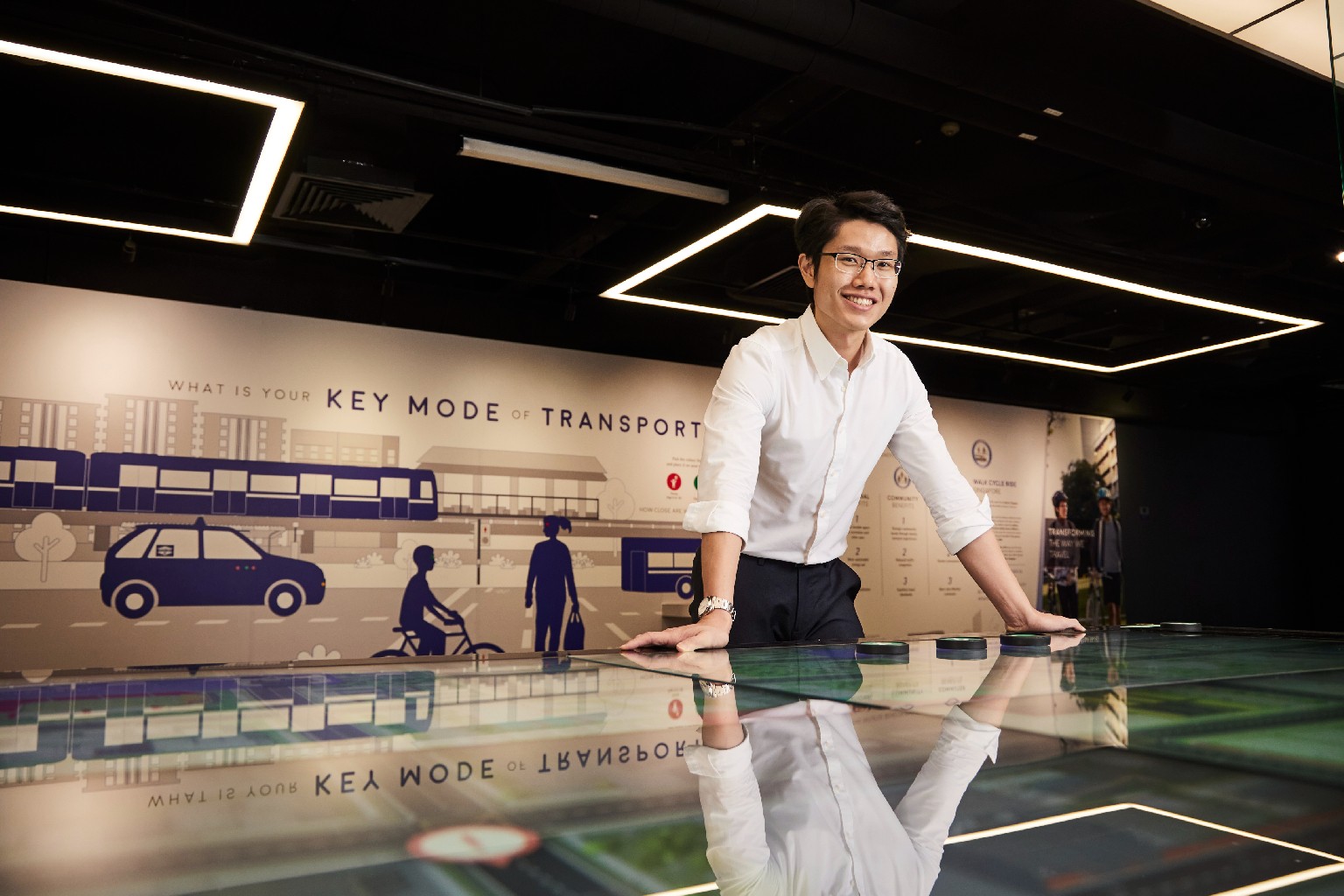
“The train has stopped here for a short while as the train ahead is still at the next station,” the public announcement system on the station platform broadcasts.
This announcement that commuters may have encountered during their Mass Rapid Transit (MRT) rides is a clue to Lau Jie Jian’s work at the Land Transport Authority (LTA). The 32-year-old project manager oversees the signalling system for LTA’s upcoming Cross Island Line (CRL), forming part of the invisible backbone that keeps millions of daily commuters to work.
“Rail signalling is the brain behind train movements,” says Jie Jian, a recipient of the LTA Undergraduate Scholarship (Mid-term). “It is a critical system used to control and manage train movement safely and efficiently.”
Consider a typical peak-hour scenario: A train approaching at 80km per hour needs to make a longer stop at a station. To what speed should the following train decelerate, maintaining a safe separation while ensuring passengers do not wait too long for the next train?
Jie Jian and his team must consider such factors in their calculations – from train specifications to weather conditions. Even a slight delay can cause a cascading effect across the network, which is why each MRT line requires a customised signalling system. CRL, Singapore’s eighth MRT line, will be the longest underground line at more than 50km long, with eight interchange stations.
When fully completed in the 2040s, the line will connect key hubs like Jurong Lake District, Punggol Digital District and Changi region, and is expected to serve up to one million riders every day.
Before his current position managing CRL’s signalling system, Jie Jian worked in the mechanical services department along the Thomson-East Coast Line (TEL). There, he looked after the air-conditioning, fire protection and ventilation systems of MRT stations, trains and tunnels.
“Working on projects like the North-South Corridor, an upcoming expressway complementing the TEL, has given me a chance to collaborate with designers, architects and engineers across different disciplines,” says Jie Jian.
A typical work day can vary, depending on the project’s timeline. At the start of a project, Jie Jian is usually reviewing design documents and meeting stakeholders in the office. At a later stage, he would don his safety equipment and head down to the MRT stations or tunnels, overseeing the equipment testing on-site.
For the mechanical engineering graduate, following through an entire project – from designing to construction to testing and commissioning – gives him great satisfaction.
“A particularly rewarding experience was being part of the team working on the TEL Stage 4,” says Jie Jian, referring to the opening of seven stations on the TEL in June 2024. “Witnessing the various components come together and seeing the stations progress towards completion was incredibly fulfilling.”
“By improving travel times and enhancing journey experiences, we contribute to the nation’s development and liveability.”
– Lau Jie Jian, recipient of the LTA Undergraduate Scholarship (Mid-term)
He adds that achieving the Temporary Occupation Permit and Fire Safety Certificate to ensure passenger safety was a major milestone that showcased his team’s dedication and expertise. This is the behind-the-scenes work that goes unnoticed to ensure commuters have a pleasant experience when they use the MRT system.
The labour bears especially sweet fruit when the stations finally opened their doors to the commuting public. “Seeing all the train enthusiasts coming to the newly opened train stations was such a joy. They were all excited to experience the new line with us,” recalls Jie Jian.
Throughout his career at LTA, he has been exposed to various technical domains, from mechanical to electrical to civil engineering.
“The complexity of the rail systems means there is always something new to learn,” he says. “Even though I’ve been with LTA for six years, I still don’t know everything. There are multiple systems within the industry, and subsystems in each system.”
Aside from technical skills, he has also had opportunities to hone his soft skills in managing stakeholders like designers, consultants and contractors. This has enabled him to ensure that complex projects adhere to the timelines and run smoothly.
With support from his bosses to pursue new skills and courses, he continues to grow professionally. Recently, Jie Jian ventured into machine learning and data science for MRT ridership estimation.
Looking back at nearly a decade ago when he first applied for the LTA scholarship, Jie Jian affirms he has chosen a satisfying and meaningful career.
“Our work directly impacts the daily lives of Singaporeans,” he says. “By improving travel times and enhancing journey experiences, we contribute to the nation’s development and liveability.”